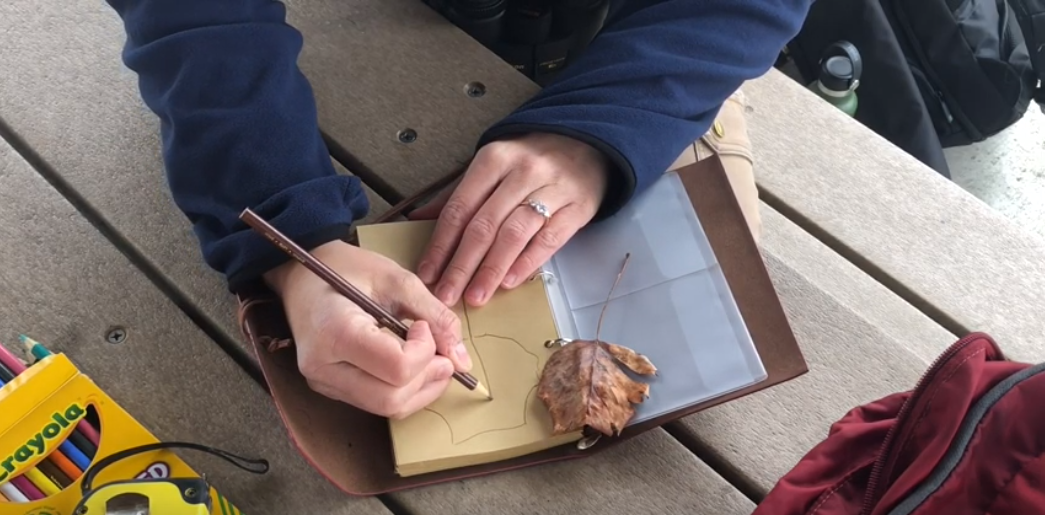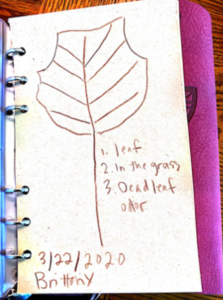
Our Natural Resources Coordinator shares how to use your eyes + ears to find interesting things in your own backyard!
It’s more important than ever to care for your mind and body. We recommend passing the time by getting creative in nature. Encourage daily discoveries outdoors with your child by creating a backyard field guide! Your child can use their homemade field guide to teach family and friends about nature. It’s easy! Just follow the steps below.
1. Decide what type of field guide you want to make.
While there are all sorts of field guides, we suggest using one of the following formats:
-
-
- Hand-drawn: A hand-drawn field guide is an easy option that encourages a bit more creativity. Your child can draw their own interpretations of specimen they have collected. For example, when collecting a leaf, they can choose the color they feel best represents the leaf. They can freehand sketch the leaf, trace the leaf, or draw all the details.
- Taped-in: This option gives your child the opportunity to physically preserve specimen, rather than just drawing them, by taping objects into their field guide.
-
2. Create your adventure pack.
Now that you’ve chosen what type of field guide you are going to create, it’s time to pack all of the supplies needed for specimen collection and field guide creation! Some things you could pack include a blank notebook, pencils and pens, markers, ruler, tape, a magnifying glass, and more. Be creative!
3. Listen, look and collect.
Now that you have your adventure pack ready, it’s time to go out and collect your specimen. When collecting specimen, start by choosing something that either stands out or looks interesting to you. You could do this by listening. Stop and listen for sounds. Do you hear a bird chirping? Do you hear something scurrying in the woods? You could also look. Walk and look around for something that stands out. Is it brightly colored? It is really small or very large? Does it have a unique texture or shape? Once you find a specimen, collect it for later observations in your field guide.
4. Take notes.

YOU are the scientist! Make observations you feel are important to note about your specimen. What color is it? What shape is it? What is its texture? Write it or draw it in your field guide!
Enjoy fresh air by getting creative. Your inner scientist will love exploring and collecting specimen on one of our trails or greenways (please practice social distancing), or even your own backyard! For more inspiration, look at the following simple field guide entry:
Once you have your first specimen drawn, get back out there and see what else you can find! Remember to use your eyes and ears and keep adding to your field guide. Try to keep your field guide year-round to have notes about all the interesting things that you’ve found!
